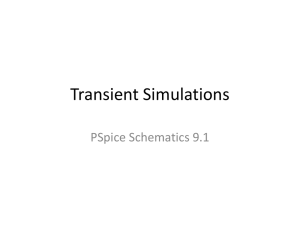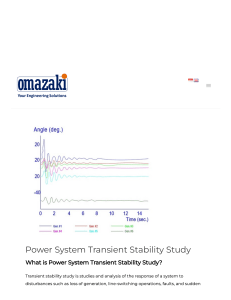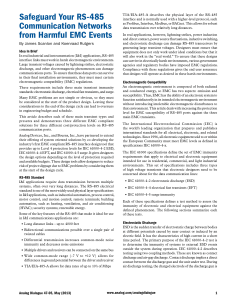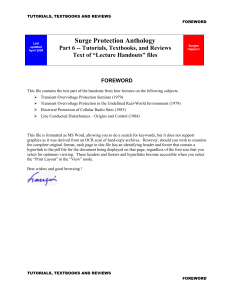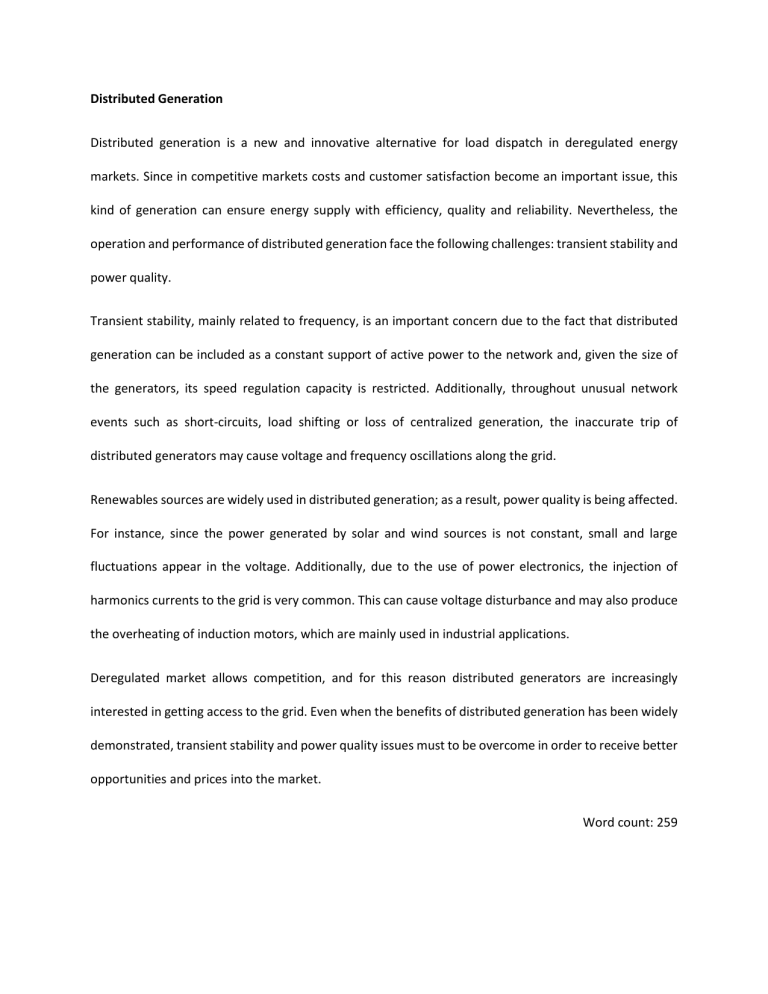
Distributed Generation Distributed generation is a new and innovative alternative for load dispatch in deregulated energy markets. Since in competitive markets costs and customer satisfaction become an important issue, this kind of generation can ensure energy supply with efficiency, quality and reliability. Nevertheless, the operation and performance of distributed generation face the following challenges: transient stability and power quality. Transient stability, mainly related to frequency, is an important concern due to the fact that distributed generation can be included as a constant support of active power to the network and, given the size of the generators, its speed regulation capacity is restricted. Additionally, throughout unusual network events such as short-circuits, load shifting or loss of centralized generation, the inaccurate trip of distributed generators may cause voltage and frequency oscillations along the grid. Renewables sources are widely used in distributed generation; as a result, power quality is being affected. For instance, since the power generated by solar and wind sources is not constant, small and large fluctuations appear in the voltage. Additionally, due to the use of power electronics, the injection of harmonics currents to the grid is very common. This can cause voltage disturbance and may also produce the overheating of induction motors, which are mainly used in industrial applications. Deregulated market allows competition, and for this reason distributed generators are increasingly interested in getting access to the grid. Even when the benefits of distributed generation has been widely demonstrated, transient stability and power quality issues must to be overcome in order to receive better opportunities and prices into the market. Word count: 259
